Discovering the Temples & Shrines of Metoba – Part Two: Chosho-ji

Rinshoji, the first of my Metoba temple discoveries, I found quite by accident. The second I had to search for. Not that it was impossible. But you do have to keep your eyes peeled. The long, depressing alleyway leading to the grounds seems more suited to a Kurosawa flick than a temple. The lane is marked, but only by an old stone with faint characters spelling out that there’s an important bell here, and a new stone post with bold black characters that tell the interested passerby that this area was called Kami-yokota-machi during the latter part of the Edo Period. Even the postman back there looks confused.
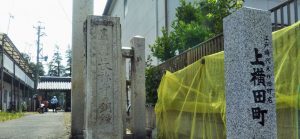
But then you peek around the backside of these stone markers to find one more. Its clear inscription tells you, if you’ve brushed up on your Kanji, that this is in fact the alley leading to Chosho-ji. Its odd placement suggests someone would like to keep this place a secret.
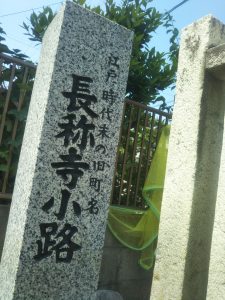
And it is true that the typically dense Japanese neighborhood surrounding Chosho-ji hides it from all but the keenest tourist eyes. This further adds to the temple’s elusive nature. I write about this place at the risk of attracting the tourist masses and destroying the peace of the place.
And peaceful it is. Unlike the condensed environs of Rinsho-ji, the grounds of Chosho Temple are spacious and uncluttered, conducive to an easy, wandering stroll as you take in the details and the angles.
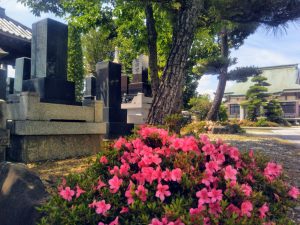
One detail that struck me early on in my visit to Chosho-ji was the apparent non-consensus as to the name of this temple. The plaque on the western gate reads, from right to left, Ki-so-yama. A certain stone monument indicates you are standing on the property of Kiso-yama Gichu-in. On the nameplate at the southern entrance and on the nearby signboard it’s Kiso-yama Chosho-ji, but with the ‘sho’ written with a different character than you’re likely to see on your google map. Rest assured, it’s all the same place.
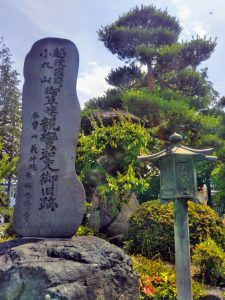
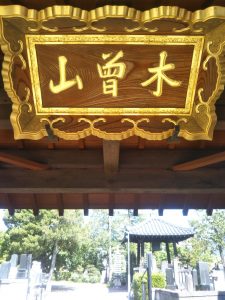
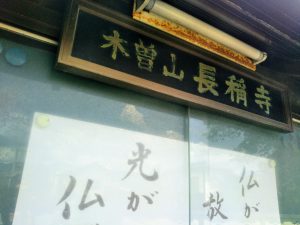
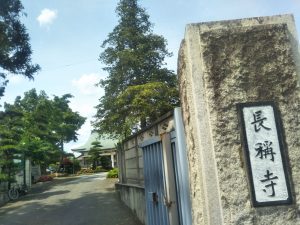
Like many temples in Japan there is a cemetery at Chosho-ji. There are a few, actually, in various large sections among the edges of the temple grounds. There’s a saying in Japan that people are born Shinto and die Buddhist. This isn’t due to any institutionalized system of infant indoctrination and last-minute old-folk conversion, but a reflection of the practices and beliefs of each religion. Shinto maintains a certain taboo about death. For this reason, in the centuries before Buddhism was brought over from the continent, every death of a Japanese emperor meant two things: One, the construction of a new burial mound; and two, the subsequent relocation of everyone and everything associated with the deceased emperor as his death meant the land from which he ruled was now tainted. Shinto rituals, then, are performed for the health and well-being of the living.
Buddhism, on the other hand, puts a fair amount of focus on the afterlife. This means a whole host of funerary rites and rituals – which, even the extravagant ones, cost a lot less than a new burial mound and the relocation of a deceased emperor’s town. The Japanese are an economical people.
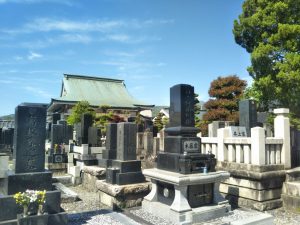
A large bronze bell is not an unusual sight at any given temple. The bell here at Chosho-ji, however, is of apparent vintage stock (not unlike the laptop I’m using right now).
This bell, approximately 76 centimeters across and 132 centimeters tall, was first cast in 1699 by a local government official named Tanaka. The bell was recast in 1753 and remained as such since then, having been spared during the wartime gathering and usurping of metal. It is, by all evidence, Matsumoto City’s only Edo Era bronze bell.
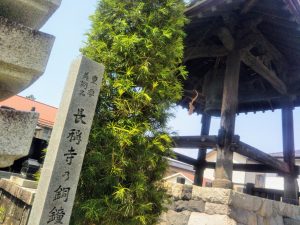
Further poking around allows one to appreciate the various aspects of Chosho-ji’s grounds, like the subtle artistry of the sparse landscaping…
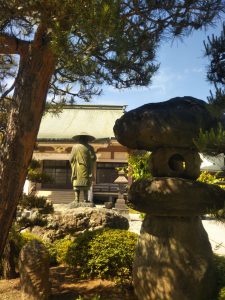
the water buckets arranged neatly on the rack in front of the western cemetery…
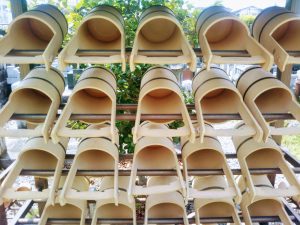
the various stone monuments and memorials (one of the Matsudaira lords is buried here);
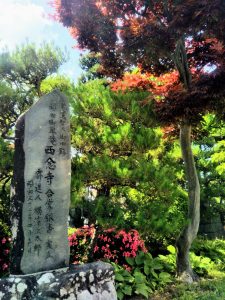
the bronze statue of a man whose identity remains, after some muddling research of Japanese writings, mysterious though I’ll go ahead and put my money on a prodigal boy named Neshin, said to have left home at the age of nine and, after traveling through the region in the beginning of the thirteenth Century, returned home in the year 1212, at which time a temple was raised to commemorate his return.
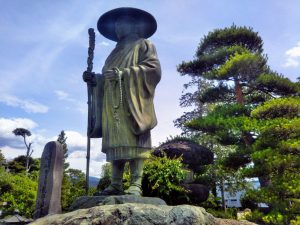
Neshin must have been a pretty special kid. Whenever I return home all I get is beer.
Chosho-ji itself has been moved from place to place over the centuries, from Kiso, south of Matsumoto, to an area along the Azusagawa River west of Matsumoto, to the town at the feet of Matsumoto Castle. It has stood in its present location since 1656 when castle lord Mizuno Tadahito moved it here from its spot down the street.
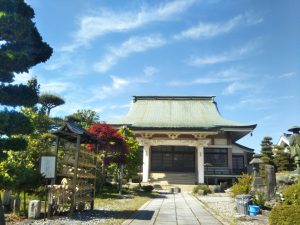
But for all Chosho-ji’s vague historical allure and noticeable photogenic appeal, what I like most about this place is what exists next door. On the south side of the temple grounds is a preschool, from where can often be heard the beautiful sounds of young children laughing, singing and playing. Such sounds, emanating from beyond the cut stone of a dense cemetery, creates, for those open to such thoughts, a sense of the fleeting treasure that is life.